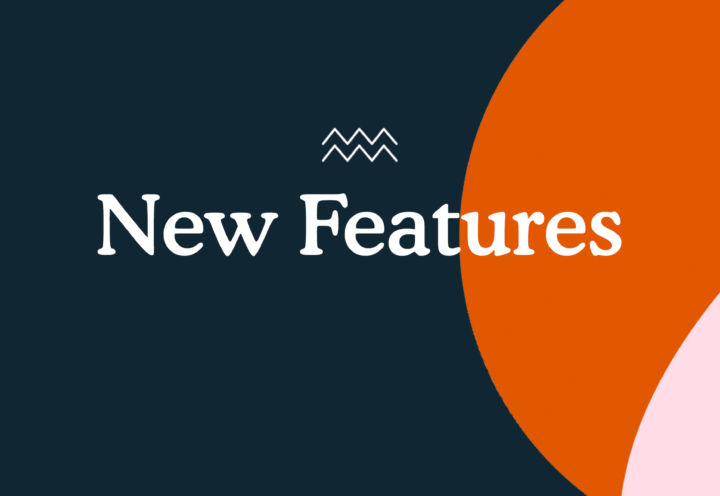A Glossary of 25 Terms every Fashion Professional should know about Clothing Production
Tech Pack (TP)
A tech pack is a sheet that designers use to inform the manufacturer of the components required in the construction of a particular product. The tech pack includes technical specifications and details such as materials, measurements, colours, hardware, trim, tags, labels, and grading among others. All the crucial and technical aspects of the product design have to be described in detail in the tech pack. Providing detailed information leaves little room for error.
Read more about tech packs here
Bill of Materials (BOM)
A Bill of Materials is a detailed list of raw material components as well as instructions that are necessary for the manufacturing of a given fashion product depending on the design specifications. Usually, the BOM is drafted in a hierarchical format. The highest level displays the finished product, while the bottom level includes individual designs, materials and components.
Finances
Request for Quotation (RFQ)
A Request for Quote is the process through which a given fashion company sends a formal request soliciting potential manufacturers and suppliers to submit bids and price quotes. It is also known as an Invitation for Bid (IfB). The key objective of the RFQ process is to allow manufacturers and suppliers to fulfill particular projects or tasks. The process is crucial to fashion companies that require a consistent supply of standardized raw materials.
Purchase Order (PO)
A purchase order is a formal document that prospective buyers send to sellers with all the details of the products and services that ought to be delivered at a later date specified by the buyer. The document allows buyers to order products and services from the suppliers without necessarily having to make a payment.
Purchase Invoice (PI)
A purchase invoice is a formal document that a supplier sends to a buyer requesting payment for products or services rendered. It is different from a sales invoice. A purchase invoice includes elements such as item, supplier, purchase order, and optional purchase receipt. The document indicates the contents of a particular transaction, and it includes the amount of the goods along with their price.
Clothing Production
Colourway
Colourway defines the different and unique colour combinations that a designer uses in the same design. For each of the respective colourways, the production needs to develop a colour grid to keep an eye on the colourways the buyer is offering for the garment. This enables the manufacturer to understand precisely how the buyer wants the garments to look in production.
Grading
Grading is a process used to create a wide range of sizes for a single product. The key objective of grading is to fit a given pattern to a range of applicable sizes. The grading process does not create shape, but it modifies the size of the original shape.
Tolerance
Tolerance is one of the most critical factors in the tech park. It is the measurement that is primarily used to ascertain whether a product fulfills a given quality standard. It can be a plus or minus measurement. Tolerance explains why no two garments of similar size are guaranteed to be exactly the same. For instance, two medium-sizes of the same shirt can have a slightly different fit but still fall within the acceptable range of mediums.
Quality Control (QC)
Quality control is a process through which a company ensures that product quality is consistent. The process revolves around the testing of product units to determine if they fall within the final product specifications. The quality control process in an organization is dependent on the industry or product standards along with the techniques that exist for assessing quality.
Quality Assurance (QA)
The quality assurance process is a quality management technique that revolves around the aspect of guaranteeing that quality requirements have been fulfilled. Quality assurance provides confidence to the management and the external stakeholders, such as the customers, regulators, and government agencies. Alternatively, it can be defined as the collection of the planned and systematic activities that are implemented to demonstrate that a given product or service has fulfilled a certain quality threshold.
Acceptable Quality Level (AQL)
The acceptable quality level is a concept of total quality. It is described as the minimum number of faults that can be tolerated in a given sample of a manufactured product. The AQL defines the minimum number of faults for an entire batch to be accepted. In cases where the number of faults is higher than the AQL, the entire batch is not accepted.
Shortages and overages
Shortages and overages occur due to minor fluctuations that occur in a high-volume packaging environment. A shortage occurs when the buyer receives less quantity than what was ordered initially, while an overage occurs when the amount received is higher than the quantity ordered. Shortages and overages are common in the manufacturing industry due to the production and packaging of thousands of products at any given time.
Critical, Major, and Minor Defects
Products can have defects that vary in nature. Critical defects are major faults that can deem the product unsafe or unusable. Meanwhile, major defects are faults that are likely to result in unit failure to meet the intended purpose. A minor defect is a deviation from the expected standard, but it does not have a significant impact on product usability.
Sample Types in Clothing Production
Proto Sample
A proto sample is the first sample that a designer develops. The proto sample can be developed based on the artwork specifications in the product development phase. Typically, a proto sample is made after the designer has received order sheets from the prospective buyer. Here, the design and style are the most important elements that ought to be considered, while fabric details and color are not considered.
Pre-Production Sample (PPS)
A pre-production sample is one variant of a development sample. It is made in the garment company before the start of the bulk production process. A pre-production sample includes trims, actual fabrics, and style accessories. According to the instructions of the prospective buyer, the PPS has to be prepared in the production line. However, in most cases, it is made in the sampling department under the watchful eye of the sampling master and a merchandiser.
Gold Seal Sample
A gold seal sample much like a PPS is a product sample that has been approved for bulk production. In some cases, the PPS is gold-sealed if the buyer has sealed it. However, the buyer seals an approved sample using a colored tag that cannot be removed without damaging the product. Some buyers assign unique codes for respective sealed samples.
Manufacturing
Cut Make Trim (CMT)
In cut make trim manufacturing, the manufacturer cuts the fabric and makes the clothes according to the design. The client provides the raw materials and the product designs. CMT manufacturers work with a wide range of businesses, from small-scale buyers to major designer brands. In some cases, CMT manufacturers offer items such as boxes and hangers.
Fully Factored Manufacturing
Fully factored manufacturing is also defined as a one-stop-shop operation. Here, the manufacturers are responsible for performing all tasks from the start of the production process to the end. After taking an order, the fully factored manufacturer sources, purchases, and supplies the raw materials before making the clothes.At the end of the production process, the manufacturer packs, ships, and delivers the products to designated locations, which may be brand stores or warehouses.
Technologies
Product Lifecycle Management (PLM)
Product lifecycle management is the handling of a product as it moves through the main stages of the product life. PLM is facilitated by the PLM software, which is a centralized repository that stores all the key data points that are crucial to decision-making. In the fashion industry, PLM software comes packaged with inventory management and supply chain functions.
Product data management (PDM)
Product data management is a system that is used to manage design information and critical engineering processes in one core location. Production teams use PDM software to classify product-related information, track changes, collaborate, generate BOMs, manage orders, and more. Manufacturers use PDM to organize and manage critical design data. PDM improves design workflows and enhances collaboration.
Product information management (PIM)
Product information management revolves around the aspect of providing a single repository that facilitates the collection, management, and enrichment of product information. From the central location, it is possible to develop a product catalog and distribute it to relevant sales channels. A PIM solution makes it simpler and faster to come up with and deliver quality product experiences.
Enterprise Resource Planning (ERP)
Enterprise resource planning is a process that companies use to manage and integrate core business parts. ERP supports material management, production planning and management, sales and distribution, costing, and quality management. The success of ERP in the apparel sector is dependent on the business process and collaboration between the owners and the core team.
Order Management System (OMS)
An order management system allows the execution of trade orders. It enables the manufacturer to track the orders placed by different retailers. An OMS ensures that the manufacturer delivers the products within the agreed timeline. An effective order management system helps the manufacturer to conduct real-time monitoring of the running orders and the specifications of the different retailers.
Customer Relationship Management (CRM)
Customer relationship management defines the practices, guidelines, and principles that a given firm follows when interacting with the customers. From the perspective of the business firm, the relationships revolve around aspects such as direct interactions during processes such as sales and after-sales services. CRM is aimed at improving the customer experience, and it includes components such as systems and companies that help an organization to monitor and control external interactions with the consumers.
Warehouse Management System (WMS)
A warehouse management system is a software application that offers detailed visibility into the inventory of a given business. The system also helps with the management of supply chain operations from the distribution facility to the store shelves. A WMS enables an organization to optimize fulfillment capabilities to respond to consumer needs. Some WMS solutions extend supply chains to align fulfillment functions and inventory handling with contemporary purchasing approaches.
Production Platform
A Production Platform is built around the needs of the modern brand and does exactly what it says on the tin. It’s software specifically for the fashion industry designed with brands and the supply chains of the future at its heart. It enables teams to communicate, manage design, product development, sourcing, order information and production – all from one single platform.
Read more about a Production Platform here.


